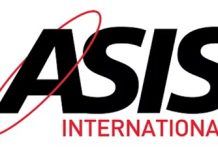According to IHS Technology, traditional high-end domestic security solutions represented about 32% of the USA market for smart security in home automation applications in 2014. By 2018, the market share of traditional high-end systems is forecast to decline to about 22%. Contrarily, for service providers, which were estimated to represent about 38% of the market in 2014, the market share is forecast to represent about 58% of the market by 2018. Device vendors are projected to expand penetration through 2016 before losing share.
In its most recent report on residential security, IHS Technology outlined three main system types: traditional high-end, service providers and device vendors.
Traditional high-end systems are specialist whole home automation systems which are supplied by companies, such as AMX, Crestron and Control4, that provide an integrated suite of smart home products, controllers and professional installation and management services.
Service providers on the other hand offer packaged solutions at relatively lower cost sold mostly through security service providers, communication service providers and utilities which provide full backend support. Most are professionally installed, by companies like Comcast, AT&T and ADT.
And finally, device vendors are individual modular smart home devices sold directly or through online/box retailers which includes Myq, Piper and Lowes Iris in the United States.








